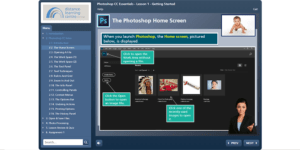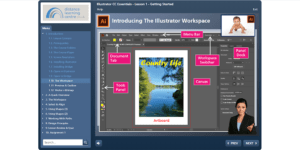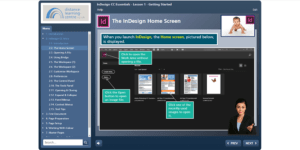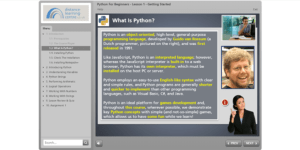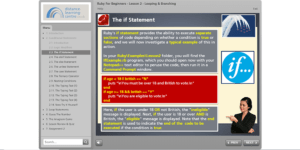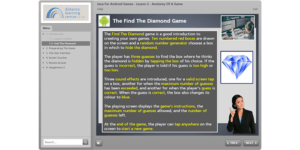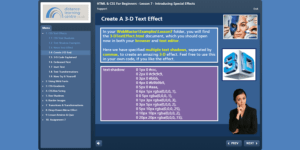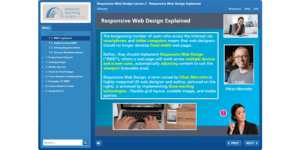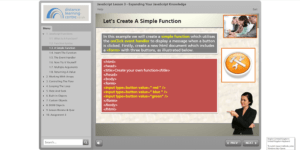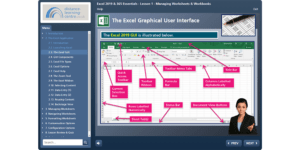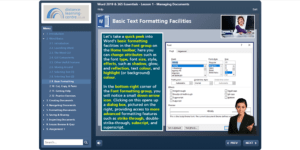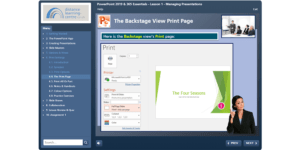Software Tester
From multinational organizations to small consulting firms, a software tester is vital in any company that develops and applies software. They ensure that software meets functional, security, performance, and usability requirements at every stage of the development process.
With the responsibility of analyzing software and systems to mitigate the risk of problems, software testers provide valuable recommendations to both internal and external clients. Their involvement in the quality assurance stage includes conducting manual and automated tests to eliminate any bugs before the software is deployed to users.
Working collaboratively within a team or independently, software testers play a critical role in the creation of technical products. Whether it’s a bespoke project or a billion-dollar multinational endeavour, these professionals ensure that the software is secure from its inception.

In this office-based or remote role, software testers interact with a variety of stakeholders, including other members of the software testing team, business areas, and external clients. With a minimum of supervision, they apply their knowledge and skills to address routine and non-routine problems, taking responsibility for their actions and providing input on improving software products.
Join the exciting field of software testing and be at the forefront of ensuring quality and functionality in the digital world.
What will I learn?
Knowledge
- The relationship between testing and quality assurance and how testing contributes to higher quality
- The difference between error, defect, and failure including the distinction between the root cause of a defect and its effects
- The impact of context on the test process including the activities, tasks and work products that support the test process
- The need for traceability between the requirements/test basis and the test work products
- The principles underpinning the psychology of testing including how the required mindset differs from the development mindset, and how this can influence success of software testing activities.
- The importance of accuracy and clear documentation of software tests and defects.
- The relationship between test activities and software development activities in the Software Development Lifecycle
- The application of testing across different recognised software development methodologies (sequential and iterative)
- The range and features of software test types within the broad categories of Functional, Non-Functional, White Box/Structural and Change-related Testing
- The objectives and approaches for testing at different Test Levels (such as Unit Testing, Component Integration Testing, System Testing, System Integration Testing and User Acceptance Testing).
- The role of static testing techniques and the review process in early defect detection
- The characteristics of Black Box, White Box and Experience-based Test Techniques
- The application of common Black Box Techniques to derive test conditions and test cases (Equivalence Partitioning, Boundary Value Analysis, Decision Table Testing and State Transition Testing)
- The role of software testing within the context of project and product risk reduction in the systems development life cycle.
- The defect management process
- The typical metrics used to support the monitoring and control of testing
- The classification of tools to support testing
- The role of test automation in the context of the software development lifecycle
- The need for conformance to specific industry standards where appropriate (such as GDPR, health informatics, safety critical, etc.) related to software testing
- Where Software Testers fit within the wider team and the roles and responsibilities that others play
- The characteristics of software architecture that impact on software testing in the development lifecycle
- The core testing behaviours, skills and tools that are common to developers, testers, and multi-skilled roles in development lifecycles
- The typical security vulnerabilities that should be addressed by testing in general and specifically by penetration testing
Skills
- Apply static test techniques
- Apply Black Box test techniques such as Equivalence Partitioning, Boundary Value Analysis, Decision Table Testing and State Transition Testing
- Analyse test objectives and requirements/test basis to define test scope and coverage criteria
- Use tools to automate, manage or support any test activity
- Apply a regression strategy including selection of tests, maintenance of regression suites and identifying tests suitable for automation
- Use defect tracking tools
- Adapt and apply testing activities according to industry standard development methodologies (sequential and iterative)
- Apply the range of different software test types within the broad categories of Functional, Non-Functional (Security, Performance & Usability), and White Box/Structural Testing
- Apply and support testing at different Test Levels appropriate to the Software Development Lifecycle (such as Unit Testing, Component Integration Testing, System Testing, System Integration Testing and User Acceptance Testing), taking into account the fundamentals of testing
- Conform to specific industry standards where appropriate (such as GDPR, health informatics, safety critical, etc.) related to software testing
- Maintain up to date knowledge of technological developments in the field of Software Testing
- Record and interpret test progress and results, communicating test status to the relevant stakeholders
- Design and follow tests to achieve coverage criteria
Behaviours
- Maintains a productive, professional, and secure working environment
- Works independently and takes responsibility. For example, disciplined and responsible approach to risk, works diligently regardless of how much they are being supervised, accepts responsibility for managing their own time and workload and stays motivated and committed when facing challenges
- A problem solving mindset within their own remit, being inquisitive and resourceful when faced with a problem to solve. Applies appropriate solutions. ensuring the true root cause of any problem is found and a solution is identified which prevents recurrence
- Applies logical thinking, for example, uses clear and valid reasoning when making decisions related to undertaking the work instructions
- Analytical – uses informal and formal techniques to deconstruct a scenario or test basis to identify tests that will demonstrate software and systems are fit for purpose
- Works collaboratively with a wide range of people in different roles, internally and externally, with a positive attitude to inclusion & diversity
- Communicates effectively in a wide variety of situations; for example, contributing effectively to meetings and presenting complex information to technical and non-technical audience.
Key Info
Duration
This apprenticeship will typically take 24-27 months to complete.
Level
This apprenticeship standard is at Level 4.
Qualifications
Where an apprentice has not already achieved Level 2 English and Maths, they must do so before taking the end-point assessment.
Training Provider
Receive top-notch training from one of our handpicked providers in our trusted network.
Allow us to handle the seamless connection between you and a training provider who will expertly guide you and your employer through your personalised training journey. With their support, you will elevate your skills and excel in your role.
Enquire now to start your learning journey
[fluentform id=”30″]








